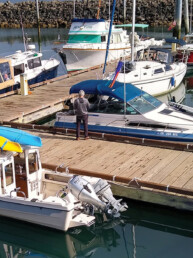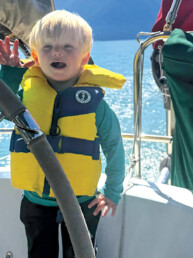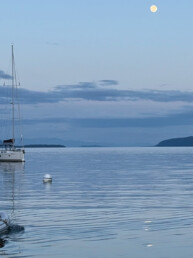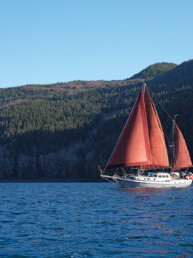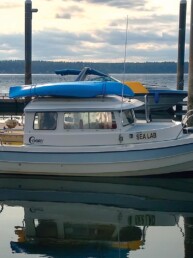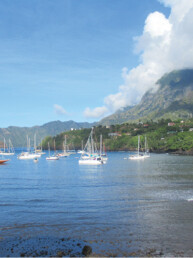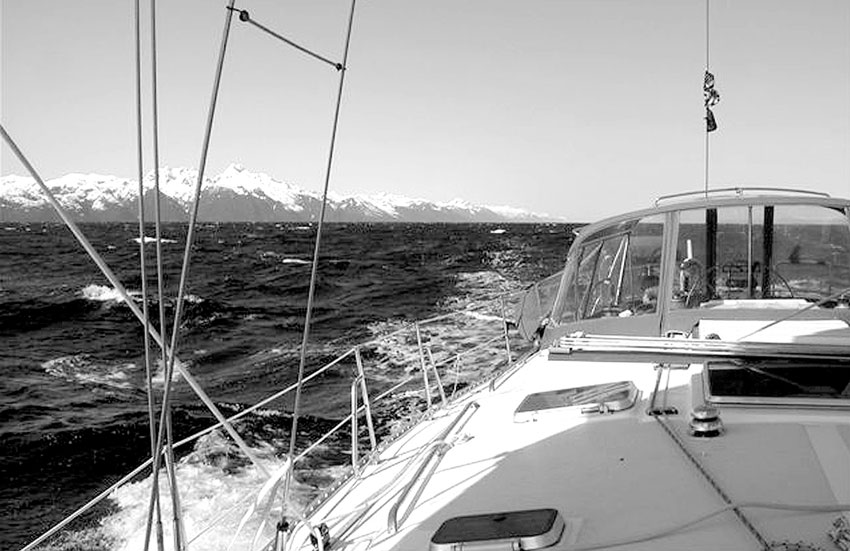 From the January 2003 issue of 48° North by Rick Fleischman
From the January 2003 issue of 48° North by Rick Fleischman
Alaska in March and April may not sound like too much fun but with the right equipment you can have a great spring sail! Last year we left Sitka in late March aboard our Catalina 50, Bob, on a “Baranof Island to Starboard” trip. My friend, Keith, flew up to join us and the lovely Miss Jennifer agreed to pull herself away from decorating duties in our new home and come along. Our full dodger, Webasto furnace, and newly installed Dickenson heater made things pretty comfortable on the boat—almost even up to Jen’s standards. Oh, she did complain a little in the mornings when we had to chip the ice off the inside of the hatches and ports, but then we’d start the heaters and run them until the whining stopped.
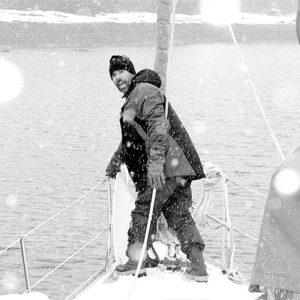
For the most part we had great weather, cool and clear with strong northerly winds. There were a few days of snow and sometimes the overnight weather dipped into the teens. As our summer sailing entails a lot of motoring, it was a treat for us to take advantage of the breeze and sail almost the entire trip around Baranof Island. We put over 300 nautical miles on the log. It was a little too early in the season for good fishing, but we found a lot of clams and Dungeness crabs. Crabbing was sometimes more complicated than normal when sheets of ice would cover the crab floats overnight, but we were able to break the floats out using our invincible inflatable icebreaker!
We spent four days over Easter at Warm Springs Bay, meeting up with our friends John and Lizzy, who care take there in the winter and our cruising friends Doug and Jenn, who took a break from their around-the-world sail to fly in with their two-year-old daughter Majken. Baranof was a thriving community early in the 1900’s but now has a full time population of three with lots of other people coming in the summer to take advantage of the great hiking, the spectacular waterfall and the natural hotsprings. The 250’ state float is often rafted three deep in the summer, but when we arrived we had the whole thing to ourselves. The weather was perfect—clear and cold. Keith and I enjoyed hiking up to Baranof Lake before meeting the others at the incredible natural hotsprings overlooking the river. The hike up the trail was complicated by several feet of snow but we only fell through the crust a few times.
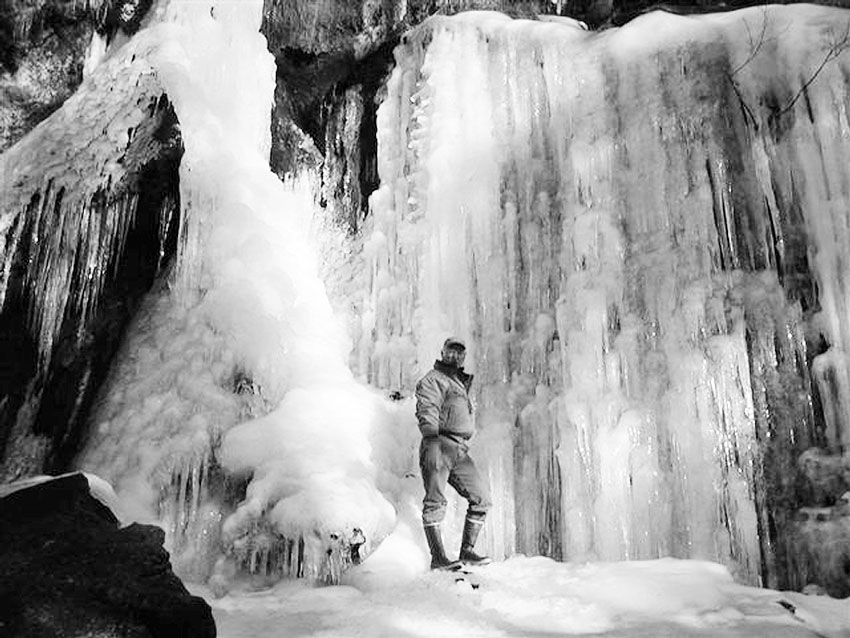
This was a working trip, so the next morning we took advantage of the large spring tides (we had a 20’ range) to put Bob on the tide grid to do some maintenance on the boat’s bottom. A tide grid is a structure, which supports the boat as the tide falls. We carefully checked out the grid at low tide, measuring distances between timbers, off the pilings, and to the rocks on shore. We put tape on the dock to mark where we should be and marked the pilings to indicate when there would be enough water to float. Then we went to the boat, measuring distances between keel and rudder, and figuring out where to place the boat on the grid so it would stand on its wing keel without falling between timbers, rolling over onto the dock, or sliding off the grid onto the rocks. As a matter of fact, we measured everything twice, just to be sure.
High tide was at 3 a.m. so we set our alarms, then spent the night tossing and turning and looking at the clock to make sure we hadn’t overslept. When the water appeared to be high enough, we motored around the dock to the tide grid with just a promise of dawn in the eastern sky. The current from the waterfall was pushing us away from the tide grid, but we managed to back Bob in without too much trouble. We didn’t have as much water as we thought — the boat got to within 6 inches of where we wanted to be and stopped. This was crunch time—it was either get off the grid immediately while we still had enough water to float or secure the boat right now. I decided we were close enough and we tied about 23 lines fore, aft, from port, from starboard, around the mast, dropped the anchor, tied one halyard to the dock and the other off the port side to the shore. We were secure, and as the water dropped, we found we had secured ourselves better than we thought by wedging a big rock under the rudder. (I’m glad we measured everything twice!) The rock only broke a little piece off the corner of the rudder.
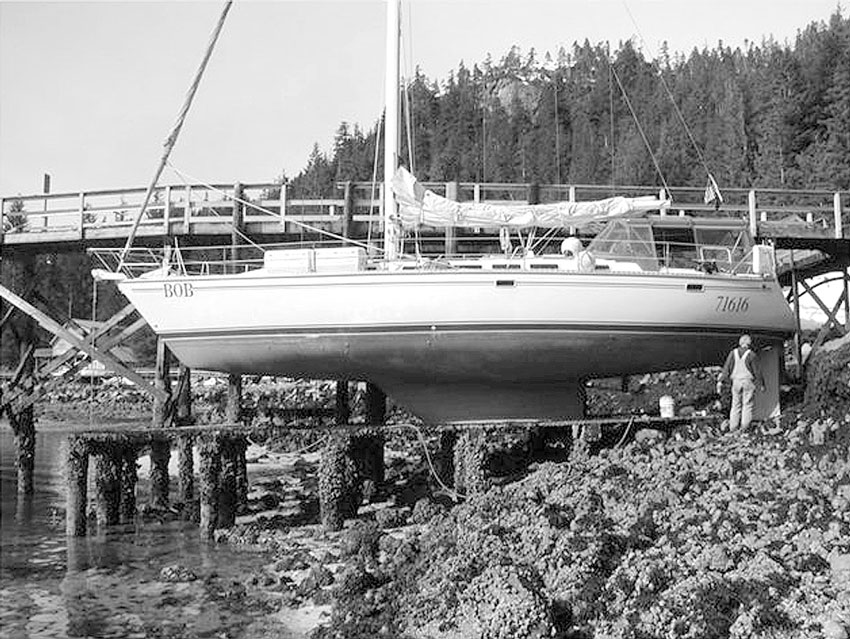
The water dropped and dropped and by daylight the boat was way up in the air standing on its keel, and the water still had three hours to ebb. We did our planned maintenance in about 15 minutes and spent the next several hours fixing the rudder with the materials we had on hand (Warm Springs Bay needs a Home Depot and a marine supply store!). Sailboat Bob now has a really cool rudder with a custom corner made out of epoxy and duct tape!
Our work finished, we hustled up to the hot spring so we wouldn’t have to watch when the boat fell over as the tide came back in. Carefully consulting the tide book, I determined that we would be floating off the grid about 4 p.m. I enjoyed the rest of the afternoon as well as anyone can when his sailboat is teetering on its keel 10 feet above the water. An hour before high tide Keith and I returned to the boat to find the water level comfortably coming up on the hull although we were not yet floating. We untied all 23 lines aft and forward, port and starboard, removed the halyards from the dock and shore, retrieved the anchor and waited for the boat to start floating. We sat on the deck and watched the water slowly rise up the piling.
With about 15 minutes left in the flood the boat started to float. I gently put it in gear and the boat slowly moved forward. We moved about 5 feet before the rudder hit the first timber—that rudder was deeper than I remembered! We tried moving the stern away from the dock, but the rocks we had carefully moved away from the rudder now blocked our escape. Keith jumped in the dingy and tried to push and pull the stern around the rocks and over the timber but we were stopped every time. Again it was time to make a decision—keep trying to leave, or secure the boat immediately before the tide dropped below the point that we could safely reposition the boat on the grid. Reluctantly, we pulled the boat back to the pilings and started again tying the boat off fore and aft, port and starboard, anchors overboard and halyards to the dock and shore. That done, the boat settled back on it’s keel and the level under the taped piling continued to drop.
Looking again at the tide table, I saw that the high tide at 4 a.m. the following day was a foot higher than the one this afternoon. Each tide was dropping a foot of range, and if we didn’t get off the next day, we would have to wait 12 days for the tides to build high enough to escape from the grid. Multiple alarms were set for 3:00 a.m. to make sure we didn’t oversleep. We spent another restful night trying to sleep with time checks every 12 to 15 minutes. Keith and I finally just gave up and got out of bed. As the high tide approached, we undid the 23 lines fore and aft, port and starboard, released the halyards and retrieved the anchor. We floated off no problem, motored 20 yards to the dock, tied up and went back to bed.
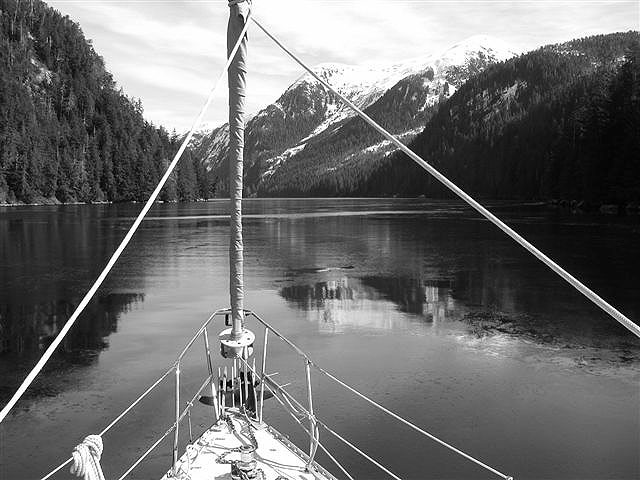
The weather forecast for the next day was perfect—cold, clear, and storm force winds out of the north—just right for our southerly sail down Chatham Strait. Our friend Lizzy decided to join us for the trip around the island to Sitka and she was soon steering the boat as the wind gusted to 50 knots and our boat speed hit over 12 knots! Luckily the wind dropped a bit and we were only going 9 knots when we hit that big log! There was an incredible crash and grinding noise as the log rolled under the boat and shot out the starboard side. The log must have been fully submerged when we hit it, as there were no marks on the hull. Luckily the shaft and rudder escaped unscathed.
The strong northerly gale carried us all the way down Chatham Strait (about 60 nautical miles) until we sailed around Cape Omany into the Gulf of Alaska. The offshore wind kept the normal roll to a minimum as we tucked in close to shore, double reefed the main, rolled up most of the jib, and reached our way up the outer coast of Baranof Island. There are lots of protected quiet anchorages along this shore and we took the next four days to work our way slowly back to Sitka going from one deserted idyllic anchorage to the next.
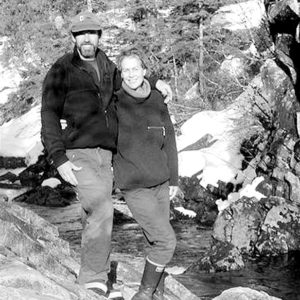
Joe Cline
Joe Cline has been the Managing Editor of 48° North since 2014. From his career to his volunteer leadership in the marine industry, from racing sailboats large and small to his discovery of Pacific Northwest cruising —Joe is as sail-smitten as they come. Joe and his wife, Kaylin, have welcomed a couple of beautiful kiddos in the last few years, and he is enjoying fatherhood while still finding time to make a little music and even occasionally go sailing.

